RP2040 VS ESP32: Is ESP32 better for your project?
Introduction
RP2040 and ESP32 are both popular microcontrollers used in the embedded systems industry. RP2040 is a microcontroller developed by Raspberry Pi Foundation. ESP32 is a microcontroller developed by Espressif Systems.
In the ever-evolving landscape of embedded systems and IoT development, choosing the right microcontroller is a pivotal decision that can significantly impact the performance and capabilities of your project. In this blog, we delve into the intricacies of the RP2040 VS ESP32, aiming to provide a comprehensive comparison that will assist developers, hobbyists, and engineers in making informed decisions for their projects.
Table of Content
RP2040 Overview
As the first microcontroller of Raspberry Pi, RP2040 brings our signature values of high performance, low cost, and ease of use to the world of microcontrollers.
With large on-chip memory, symmetrical dual-core processor complex, deterministic bus structure, and rich peripheral set, as well as our unique programmable I/O (PIO) subsystem, it provides professional users with unparalleled functionality and flexibility sex. With detailed documentation, a complete MicroPython port, and a UF2 bootloader in ROM, it has the lowest possible entry barrier for beginners and hobbyist users.
The RP2040 is a stateless device that supports in-place execution from an external QSPI memory cache. This design decision allows you to select the appropriate density of non-volatile storage for your application and benefit from the low prices of commodity flash memory devices.
Manufactured on a modern 40nm process node, the RP2040 offers high performance, low dynamic power consumption, and low leakage, with multiple low-power modes to support long-term operation on battery power.

Figure1-RP2040
ESP32 Overview
ESP32 is a WiFi chip launched by Espressif Information Technology. This chip possesses a dual-core 32-bit MCU, a 2.4GHz dual-mode WiFi and Bluetooth chip, and a main frequency of up to 230MHz.
The ESP32 uses the Tensilica Xtensa LX6 microprocessor, including dual-core and single-core versions, built-in antenna switches, RF radio frequency modules, power amplifiers, low-noise receive amplifiers, filters, and power management modules.
The ESP32 also includes a range of peripherals and interfaces such as UART, SPI, I2C, and Ethernet, making it a versatile choice for various applications. In addition, ESP32 supports multiple programming languages, including C, C++, MicroPython, Lua, Arduino, etc., and can be programmed using the official ESP-IDF SDK or various third-party development tools. Due to its features and functionality, ESP32 is suitable for the Internet of Things (IoT), home automation, and robotics industries.

Figure2-ESP32
RP2040 Specifications
- Dual ARM Cortex-M0+ @ 133MHz
- 264kB on-chip SRAM in six independent banks
- Support for up to 16MB of off-chip Flash memory via a dedicated QSPI bus
- DMA controller
- Fully-connected AHB crossbar
- Interpolator and integer divider peripherals
- On-chip programmable LDO to generate core voltage
- 2 on-chip PLLs to generate USB and core clocks
- 30 GPIO pins, 4 of which can be used as analog inputs
- Peripherals
o 2 UARTs 2 UART
o 2 SPI controllers
o 2 I2C controllers
o 16 PWM channels
o USB 1.1 controller and PHY, with host and device support
o 8 PIO state machines
ESP32 Specifications
Wireless connection WiFi: HT40 data rate is 150.0 Mbps
Bluetooth: BLEQ (Bluetooth Low Energy) and Bluetooth Classic
Processor: Tensilica Xtensa dual-core 32-bit LX6 microprocessor running at 160 or 240 MHz
Memory:
- ROM: 448 KB (for boot and core functionality)
- SRAM:520 KB (for data and instructions)
RTC fas SRAM: 8 KB (for data storage and main CPU during RTC startup from deep sleep mode)
RTC slow SRAM: 8KB (for coprocessor access in deep sleep mode)
eFuse: 1Kbit (256 bits are used for the system (MAC address and chip configuration), and the remaining 768 bits are reserved for customer applications, including Flash-Encryption and Chip-ID)
Embedded Flash: Flash memory connected internally via I016, I017, SD_CMD, SD_CLK, SD_DATA_0, and SD_DATA_1 on ESP32-D2WD and ESP32-PICO-D4.
OMiB (ESP32-DOWDQ6, ESP32-DOWD and ESP32-S0WD chips) 2 MiB (ESP32-D2WD chip)
Low power consumption: ensures you can still use ADC conversion, for example, during deep sleep.
Peripheral interfaces:
34 × programmable GPIOs
12-bit SAR ADC up to 18 channels
2 × 8-bit DACs
10 × touch sensors (capacitive sensing GPIOs )
4 × SPI
2 × I²S interfaces
2 × I²C interfaces
3 × UART
SD/SDIO/CE-ATA/MMC/eMMC host controller
SDIO/SPI slave controller
Ethernet MAC interface with dedicated DMA and planned IEEE 1588 Precision Time Protocol support[4]
CAN bus 2.0
Infrared remote controller (TX/RX, up to 8 channels)
Motor PWM
LED PWM (up to 16 channels)
Hall effect sensor
Ultra-low-power analog pre-amplifier
Security:
IEEE 802.11 standard security features all supported, including WPA, WPA2, WPA3 (depending on the version)[5] and WAPI
Secure boot
Flash encryption
1024-bit OTP, up to 768-bit for customers
Cryptographic hardware acceleration: AES, SHA-2, RSA, elliptic curve cryptography (ECC), random number generator (RNG)
RP2040 VS ESP32 Specification
|
Number |
RP2040 |
ESP32 |
|
Product details |
||
|
CPU |
Arm Cortex-M0+ Dual-core @133MHz |
Tensilica Xtensa LX6 |
|
32 bit Dual-Core @ 160 / 240Mhz |
||
|
Coprocessor |
|
ULP |
|
RAM |
264 KB |
520 KB |
|
ROM (Flash) |
|
448 KB |
|
UART |
2 |
3 |
|
SPI |
√ 2 (OSPI) |
√ 4 |
|
Wi-Fi |
✕ |
√ 802.11b/g/n |
|
Bluetooth® |
✕ |
√ 4.2 BR/EDR + BLE |
|
USB Host |
√ |
✕ |
|
Ethernet (LAN, RJ45) |
✕ |
√ 10/100Mbps |
|
RTC Memory |
|
16 KB |
|
External SRAM |
|
8 MB up to |
|
External Flash |
|
16 MB up to |
|
ESP-MESH |
✕ |
√ |
|
CAN |
|
√ v2.0 |
|
GPIO |
30 |
34 |
|
Hall effect sensor |
✕ |
√ |
|
Temperature sensor |
✕ |
√ |
|
Touch sensors |
|
10 |
|
I²C |
√ |
√ up to 2 |
|
I2S |
1 |
2 |
|
ADC |
√ x4 12-bit |
√ 12-bit SAR ADC up to 18 channels |
|
DAC |
✕ |
√ 8-bit up to 2 channels |
|
PWM |
√ up to 16 |
√ up to 8 |
|
SDMMC |
✕ |
√ |
|
RMT (remote control) |
✕ |
√ 8-bit up to 2 channels |
|
LCD Interface |
✕ |
✕ |
|
Camera Interface |
✕ |
✕ |
|
Deep sleep consumption |
18 µA (Dormant) 39 µA (Sleep) |
10 µA, √ |
|
Security |
|
|
|
Secure flash |
|
1024-bit OTP secure boot |
|
Cryptography support |
|
AES, SHA-2, RSA, ECC, RNG |
|
Dimensions |
||
|
Height |
7 mm |
6 mm |
|
Width |
7 mm |
6 mm |
|
Weight |
|
|
Advantages and Disadvantages: RP2040 VS ESP32
RP2040 Advantage
High performance: RP2040 features a dual-core ARM Cortex-M0+ processor that provides high performance and low power consumption.
Low cost: RP2040 is an affordable microcontroller, making it an attractive option for hobbyists and makers.
Ample memory: RP2040 has 264KB of on-chip RAM, providing ample memory for a wide range of applications.
Programmable input/output (PIO) subsystem: RP2040's unique programmable input/output (PIO) subsystem allows for custom logic and peripheral emulation.
Easy to program: RP2040 supports a variety of programming languages and development tools, making it easy to program and integrate into projects.
RP2040 Disadvantages:
Limited peripherals: RP2040 has limited peripherals compared to some other microcontrollers, which may limit its use in certain applications.
No built-in Wi-Fi or Bluetooth: RP2040 does not have built-in Wi-Fi or Bluetooth connectivity, which may limit its use in certain IoT applications.
Newer technology: RP2040 is a relatively new microcontroller, which means that it may not have as much community support or available resources as some more established microcontrollers.
ESP32 Advantage
Low cost: Easily accessible to the general as the starting price is $6.
Low power consumption: Compared with other microcontrollers, ESP32 has extremely low power consumption and supports low-power mode states such as deep sleep to save power.
Wi-Fi capabilities: ESP32 can easily connect to a Wi-Fi network to connect to the Internet (station mode), or create its own WiFi wireless network (access point mode) so that other devices can connect to it - this is perfect for IoT and Crucial for home automation projects - multiple devices can communicate with each other with this WLFi capabilities.
Bluetooth: ESP32 supports Bluetooth Classic and Bluetooth Low Energy (BLE) – suitable for a variety of IoT applications.
Dual Core: Most ESP32s are dual core - they process 2 Xtensa 32-bit LX6 microprocessors: Core 0 and Core 1.
Abundant peripheral input and output interfaces - ESP32 supports capacitive touch, ADC, DAC, UART, SPI, I2C, and other input (read data from the outside world) and output (send commands/signals to the outside world) peripherals, pulse width modulation, etc.
Compatible with Arduino "Programming Language": Easy to operate with Arduino board.
Compatible with MicroPython: You can program the ESP32 using MicroPython firmware, a reimplementation of Python 3 for microcontrollers and embedded systems.
Pinout RP2040 VS ESP32
RP2040 Pinout

Figure3-RP2040 Pinout
ESP32 Pinout
ESP32 offers a variety of peripherals and pins, including:
GPIO pins: Pins used for digital input/output and general purpose.
UART, SPI, and I2C interfaces: used to connect various external devices such as sensors, displays, memories, etc.
ADC (Analog-to-Digital Converter): Used to measure analog signals, such as temperature sensor output.

Figure4-ESP32 Pinout
RP2040 VS ESP32 Block Diagram
RP2040 Diagram

Figure5- RP2040 Diagram
ESP32 Block Diagram

Figure6- ESP32 Block Diagram
RP2040 VS ESP32: Similarities
Dual-Core Design:
Both the RP2040 and ESP32 feature dual-core processors, allowing for parallel processing and improved performance in multitasking scenarios.
Community Support:
Both platforms have active and growing communities, providing support, documentation, and a range of libraries that can be leveraged for development.
GPIO Pins:
Both platforms offer a variety of GPIO pins for general-purpose digital input/output.
Development Ecosystem:
Both the RP2040 and ESP32 have a well-established development ecosystem with support for popular programming languages like C and MicroPython, as well as integrated development environments (IDEs) like Arduino IDE.
Low Power Modes:
Both microcontrollers support low-power modes, allowing them to conserve energy in battery-powered applications.
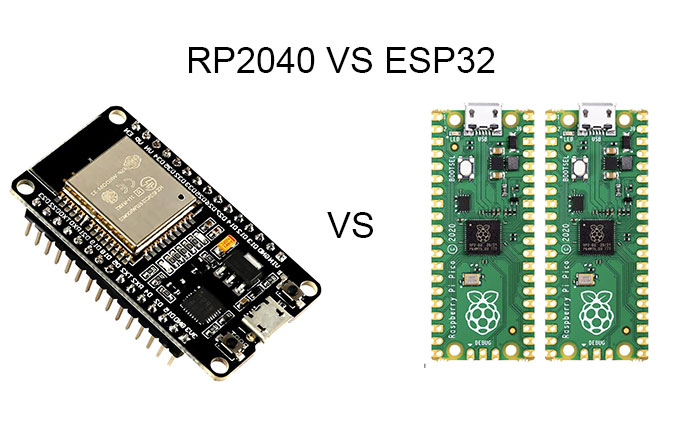
Figure7- RP2040 VS ESP32
RP2040 VS ESP32: Differences
Microprocessor
The ESP32 C3 microprocessor amounts to a single-core RISC-V 32-bit CPU when considering the microprocessor of the Raspberry Pi Pico, which has a dual-core Arm Cortex-M0+ dual-core.
RAM and Clock Frequency
The RAM flash memory of the ESP32 C3 is 400KB SRAM, while the RAM flash memory of the Raspberry Pi Pico is 264 KB. The two microcontrollers have different clock frequencies: the ESP32 C3 has a clock speed of 160 MHz, whereas the Raspberry Pi Pico has a clock frequency of 133 MHz.
Wireless Connectivity
WiFi MAC and WiFi Baseband connections are supported by the ESP32 C3. However, the Raspberry Pi Pico lacks WiFi connectivity, which may be one of the factors influencing your decision not to select this microcontroller.
Regarding long-range Bluetooth, the ESP32 C3 has Bluetooth 5 LE available, which enables secure connectivity to the Internet of Things apps. However, Bluetooth connectivity is not available for the Raspberry Pi Pico.
Supported Interface
Other interfaces are also supported by the microcontrollers; the ESP32 C3 is compatible with I2C, GPIO, ADC, PWM, and UART interfaces. Nevertheless, in the instance of the Raspberry Pi Pico, the additional interfaces that are supported are 2 × I2C, 2 × SPI, 16 × PWM channels, and 2 × UART.
Power Consumption
When considering a microcontroller purchase, power consumption is still another important consideration. The Raspberry Pi Pico uses 91 milliampere-hours of electricity.
On the other hand, the ESP32 C3 has three possibilities; it draws more than 100 mA even when it is plugged with WiFi. It uses roughly 100uA to enter deep sleep and 2mA to enter light sleep mode.
Therefore, the Raspberry Pi Pico microcontroller is superior when taking power usage into account.
Programming Language
It is essential to take into account the programming language in order to create a simple user interface. However, when it comes to the two microcontroller possibilities under consideration, there isn't a significant difference in the programming language environment.
These two are compatible with MicroPython, C++, and C language. Indeed, you will also find an interpreter in the case of both selections. For smaller projects, you might decide to use MicroPython or C++ if you're utilizing an ESP32 C3.
You might decide to use the IoT framework with the ESP32 C3 when overseeing intricate projects. With regard to the Raspberry Pi Pico, its USB mass storage capability makes it fairly user-friendly.
Flash Memory
The Raspberry Pi Pico has a 2 MB flash memory. Nonetheless, the ESP32 C3 has a maximum flash memory capacity of 16 MB. Since there is a greater need for memory in areas with connection, the ESP32 C3's higher flash memory than Pi Pico may be justified.
On the other hand, since the Pi Pico itself lacks Bluetooth and WiFi connectivity, its flash memory is also warranted. Therefore, in this microcontroller's instance, the 2 MB flash memory is likewise adequate.
Is ESP32 Better Than RP2040?
In summary, saying that ESP32 is superior to RP2040 or vice versa isn't always accurate because each microcontroller has advantages and disadvantages of its own. The choice between ESP32 and RP2040 depends on your project's specific requirements. If you need Wi-Fi and Bluetooth connectivity, the ESP32 may be more suitable. If you're looking for a low-cost, high-performance microcontroller without the requirement for wireless connectivity, the RP2040 could be a better choice. Consider factors such as power consumption, available peripherals, and your project's communication requirements when making your decision.

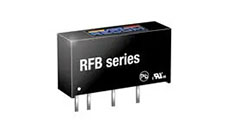 DC-DC converter RFB-0505S: Specification,Datasheet,Features and Applications6/13/2024 447
DC-DC converter RFB-0505S: Specification,Datasheet,Features and Applications6/13/2024 447The RFB-0505S is a DC-DC converter from RECOM Power, Inc., belonging to the RFB Series. It features a Single In-Line Package (SIP7) and provides a single unregulated output. This converter offers 1 watt of power with an output voltage of 5V and is rated for an isolation voltage of 1kV.
Read More >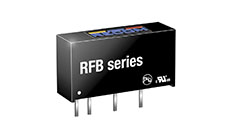 Understanding the RFMM-0505S DC-DC Converter: A Comprehensive Guide6/4/2024 626
Understanding the RFMM-0505S DC-DC Converter: A Comprehensive Guide6/4/2024 626In the world of electronics, ensuring efficient power management is crucial for the performance and reliability of devices. One of the key components in achieving this is the DC-DC converter. Today, we dive into the specifics of the RFMM-0505S DC-DC converter, exploring its features, applications, and benefits.
Read More >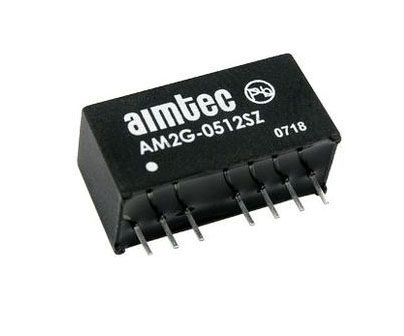 12V DC-DC Converter AM2G-0512SZ: Specifications, Datasheet, Applications and Features6/3/2024 537
12V DC-DC Converter AM2G-0512SZ: Specifications, Datasheet, Applications and Features6/3/2024 537A DC-DC converter is an essential electronic device to convert a direct current (DC) source from one voltage level to another. These converters are widely employed in various applications, including portable electronic devices, automotive systems, and renewable energy installations.
Read More >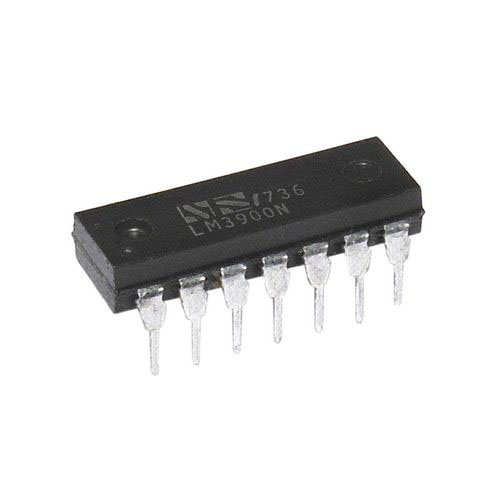 What is LM3900 Quadruple Norton Operational Amplifier?5/30/2024 1127
What is LM3900 Quadruple Norton Operational Amplifier?5/30/2024 1127The LM3900 consists of four independent dual-input internally compensated amplifiers. These amplifiers are specifically designed to operate on a single power supply voltage and provide a large output voltage swing. They utilize current mirrors to achieve in-phase input functionality. Applications include AC amplifiers, RC active filters, low-frequency triangle waves, square wave, and pulse waveform generation circuits, tachometers, and low-speed, high-voltage digital logic gates.
Read More >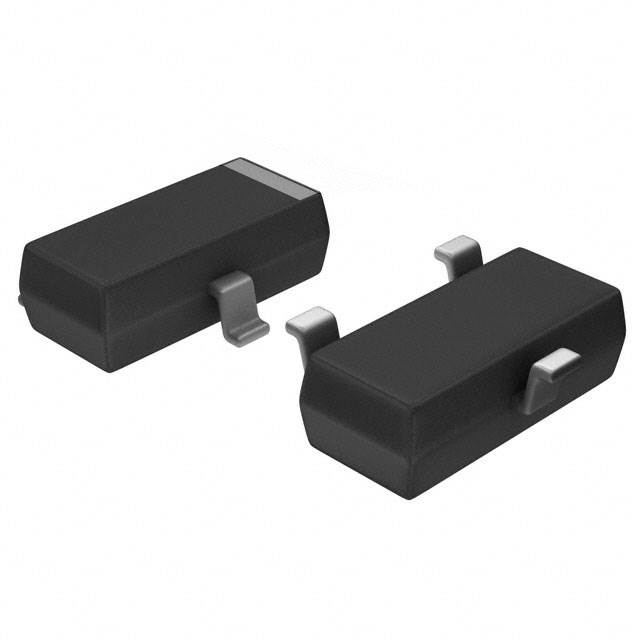 Exploring the MMBT3906 Transistor: A Comprehensive Guide5/24/2024 776
Exploring the MMBT3906 Transistor: A Comprehensive Guide5/24/2024 776The goal of the Taiwan Semiconductor MMBT3906 PNP Bipolar Transistor is to provide a high surge current capability with minimal power loss. This transistor is perfect for automated installation and has high efficiency.
Read More >
























